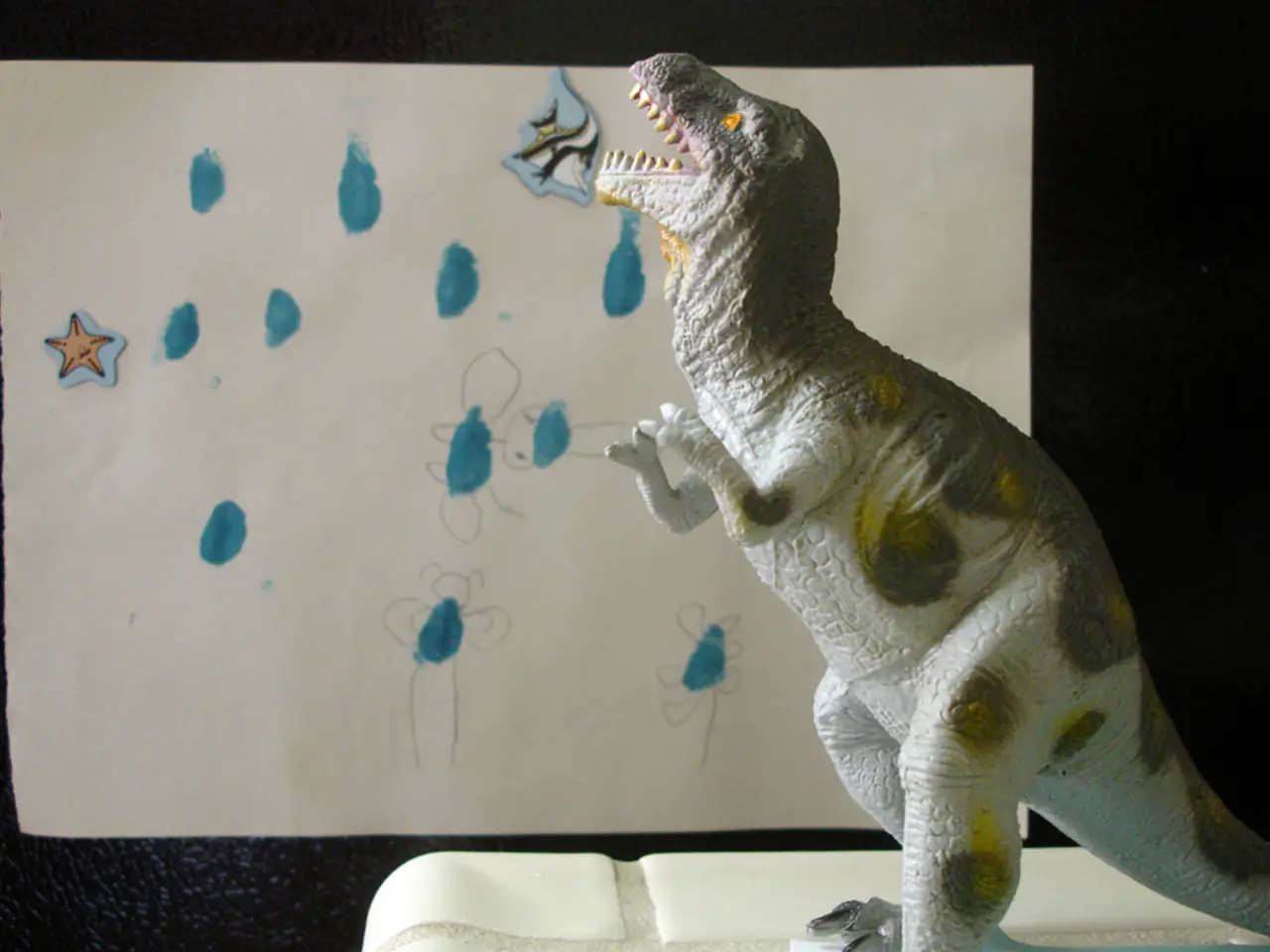New Findings in Dinosaur Archeology: Adding Pieces to the Puzzle of Prehistoric Life
In the realm of prehistoric creatures, the study of dinosaurs continues to captivate scientists and the general public alike. Each new discovery brings us one step closer to understanding the mysteries of these ancient beings that once roamed the Earth.
Paleontologists are using fossils from different time periods to uncover the evolutionary transitions in dinosaurs. Fossils like the Archaeopteryx have bridged the gap between reptiles and birds, showcasing the gradual development of feathers and flight-related adaptations. This gradual evolution has also been highlighted by the discovery of the Tiktaalik in Canada, which helped us understand the transition from fish to land-dwelling animals.
More recently, the Yi qi, discovered in China in 2015, has added a new chapter to our understanding of dinosaur evolution. This unique dinosaur sports bat-like wings, challenging previous notions about dinosaur anatomy.
New technologies have played a significant role in these discoveries. Techniques such as CT scanning and 3D modeling have allowed scientists to study fossils in unprecedented detail, uncovering hidden anatomical features like soft tissues and internal structures.
The study of dinosaur behaviour and ecology has also seen significant strides. By studying fossilized tracks, nests, and stomach contents, scientists can gain new insights into the behaviour and ecology of dinosaurs. For instance, fossilized eggs and nests found in Argentina provide evidence for dinosaur parental care, similar to modern birds.
Research on theropod wrist bones in bird-like dinosaurs from the Late Cretaceous of Mongolia reveals the early development of a tiny wrist bone crucial for wing stabilization in flight, millions of years earlier than previously believed. This provides critical evolutionary evidence linking dinosaurs to birds and the emergence of flight.
Detailed microscopic analysis of sauropod teeth has revealed species-specific differences in dental wear linked to dietary niche partitioning, migration, and climate adaptation. This work illustrates that ecological principles like niche formation and behavioural diversification were key to sustaining high sauropod diversity in the Morrison Formation.
Stable calcium isotope analysis of teeth from the Morrison Formation suggests niche partitioning between herbivorous dinosaurs like Camarasaurus and Camptosaurus, and that the theropod Allosaurus likely consumed little bone. This reveals more complex food web interactions and resource partitioning than was earlier understood.
The future of dinosaur discoveries looks promising with advancements in technology and exploration of remote areas. The discovery of feathered dinosaurs in China has provided strong evidence for the evolution of birds from dinosaurs. New dinosaur species are being discovered at an astonishing rate in Argentina, China, and the United States. Analysis of dinosaur coprolites (fossilized feces) reveals information about their diet and changes over time.
Continuing research aims to explore ontogenetic (juvenile vs. adult) dietary differences in sauropods and adaptations of insular dwarf species such as Europasaurus, deepening our understanding of evolutionary ecology and paleobiology in dinosaurs.
These findings collectively emphasize that dinosaur evolution involved varied body sizes from the start, intricate ecological differentiation, and behaviours linked to anatomically important innovations leading to birds. Modern techniques like isotopic analysis, dental microwear studies, and detailed fossil track examination are unlocking new dimensions of dinosaur life and their ecosystems.
Technology and science have expanded our understanding of dinosaur evolution, with paleontologists utilizing technological advancements such as CT scanning and 3D modeling to study fossils at unprecedented detail. This technology has contributed to unearthing hidden anatomical features and internal structures, as seen in the Yi qi, a dinosaur discovered in China with bat-like wings.
In the realm of dinosaur ecology, technology has played a critical role in analyzing fossilized tracks, nests, and stomach contents to gain insights into dinosaur behavior and dietary habits, such as the evidence for parental care found in Argentinian fossilized nests. Furthermore, modern techniques like isotopic analysis and detailed fossil track examination continue to unlock new dimensions of dinosaur life and their ecosystems.




